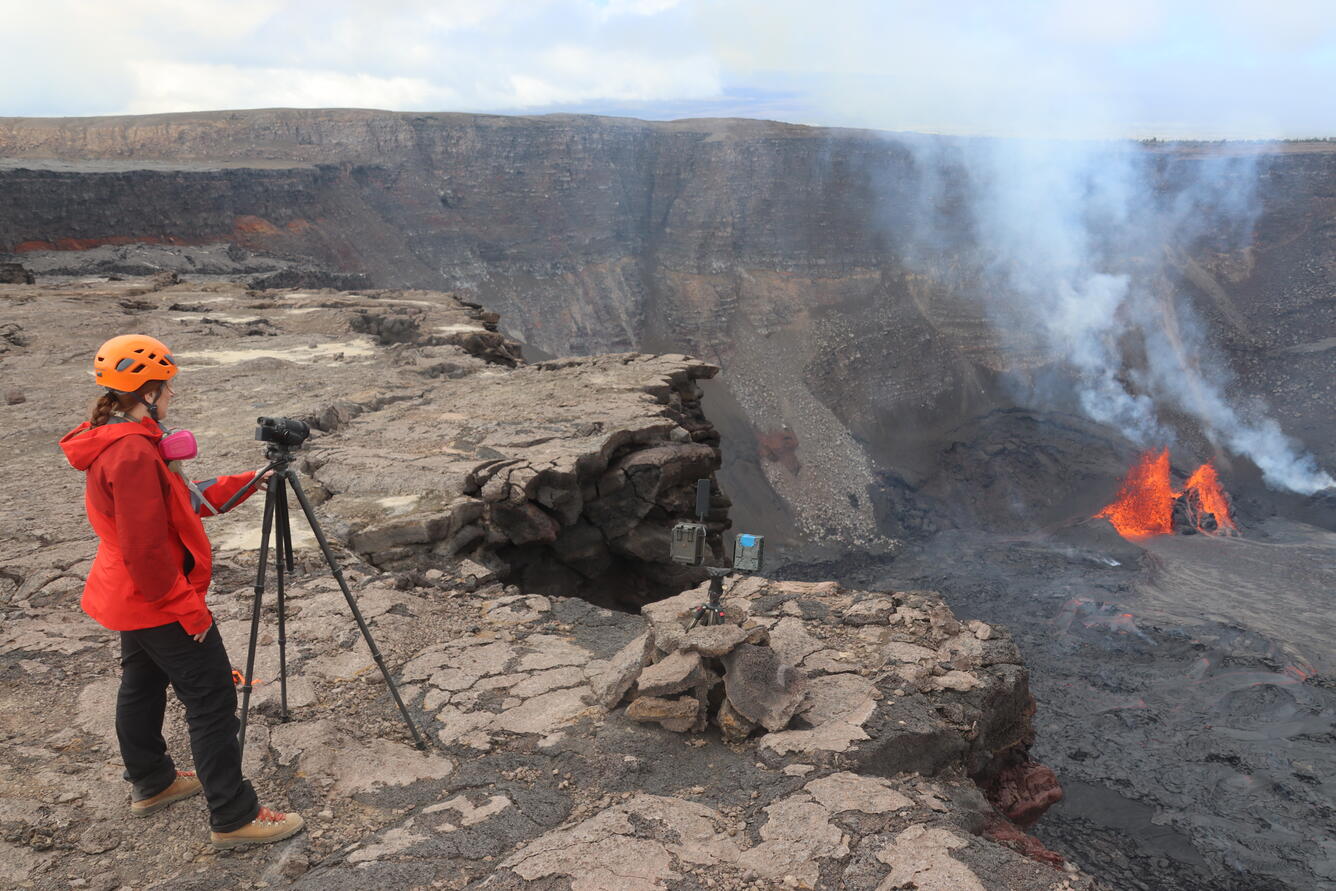Calderas Across Two Worlds
The current eruption at Klauea in Hawai'i that started just before Christmas is still rolling along. The activity from the major vents on the edge of the Halema'uma'u crater has waxed and waned some, but lava fountains reaching tens of meters (hundreds of feet) have been common for the past week. The USGS Hawaii Volcano Observatory reports that lava from this eruption has covered two-thirds of the caldera floor. An overflight of the volcano on December 27 showed the extent of the new, dark, black lava flows from the eruption. A small cone has built up on the edge of the caldera where the vents have been most active. The most recent reports (December 30) from the HVO say that the summit area is slowly deflating but sulfur dioxide emissions are still high, which makes sense considering that the eruption is ongoing.Webcam image of lava flows across the Halema'uma'u Crater at Klauea from the December 2024 eruption. Credit: USGS/HVO.Shield volcanoes like Klauea see these cycles of eruption and collapse commonly. This is the sixth eruption that the summit caldera of Klauea has experienced in since 2000, with some events filling in the caldera while others help deepen it through more collapse. The most recent collapse event happened during the 2018 eruption, when the eruption on the East Rift Zone led to a collapse that doubled the width and deepened Halema'uma'u from 85 meters (280 feet) to 488 meters (1,600 feet) deep! Thing is, Halema'uma'u isn't a caldera, but rather a pit crater formed initially in the last few hundred years.Klauea's CalderaThe summit caldera of Klauea in Hawai'i seen by ESA's Sentinel-2 on December 25, 2024. Credit: ESA, annotated by Erik Klemetti.If you check a recent Sentinel-2 image of the summit of Klauea, you can see the generations of different collapses in the multiple calderas. I've numbered some different calderas or collapse craters at the summit, including the larger Kaluapele Caldera that formed in the late 1400s and early 1500s as well as Halema'uma'u Crater including the deeper down-dropped block from 2018. There are also smaller features (pit craters) like 1959's Klauea Iki.The full Kaluapele Caldera is a robust 4 kilometers (~2.7 miles across). It formed through gradual collapse unlike some other terrestrial calderas like Yellowstone or Crater Lake that formed thanks to very large explosive eruptions. Imagine the Kaluapele eruption forming as the magma that was holding the land up erupted as lava flows across Klauea over the course of months to years.The Largest CalderaThe summit calderas of Olympus Mons on Mars seen by ESA's Mars Express on January 21, 2004. Credit: ESA, processed by Andrea Luck/Flickr, annotated by Erik Klemetti.As big as Klauea's caldera seems, it is nothing compared to the multiple calderas found on top of the solar system's largest volcano, Olympus Mons on Mars. However, they do share a lot of similarities. Most likely, the many calderas on Olympus Mons formed thanks to copious lava flows draining the magma body inside the volcano rather than massive explosive eruptions. There is a sequence of calderas (and collapses) as well on Olympus Mons. I've numbered the sequence of caldera formation on ESA's Mars Express image taken on January 21, 2004. All of these calderas have names like Athena Patera, Hera Patera and Apollo Patera -- patera being the word we use for calderas on other planets or moons.However, they are big. The largest -- Zeus Patera (1 on my image) -- is at least 60 kilometers (37 miles) across and might be as large as 72 kilometers (45 miles) at its widest. Even a smaller one like Athena Patera (4 on my image) is 20 kilometers (12 miles) across, dwarfing Kaluapele Caldera on Klauea. Yet, all of these are the same volcanic feature formed by eruption and collapse. You could even imagine eruptions like we see on Klauea today happening many millions of years ago at Olympus Mons on Mars.Webcam capture showing the vents for the December 2024 eruption at Klauea in Hawai'i. Credit: USGS/HVO.You can still watch the current eruption at Klauea on the USGS-HVO summit webcam. As mentioned by HVO, these eruptions could be over in days ... or over a year. The fountaining going on right now suggests that the supply of magma to the summit is robust, so the lava will continue to pave the floor of Haluma'uma'u. It might be a lot smaller than its cousins on Mars, but we learn about distant volcanoes on other planets by watching eruptions like this on Earth.


